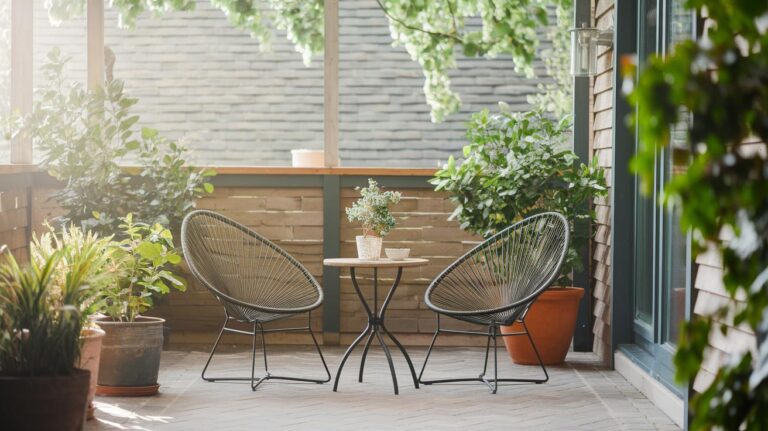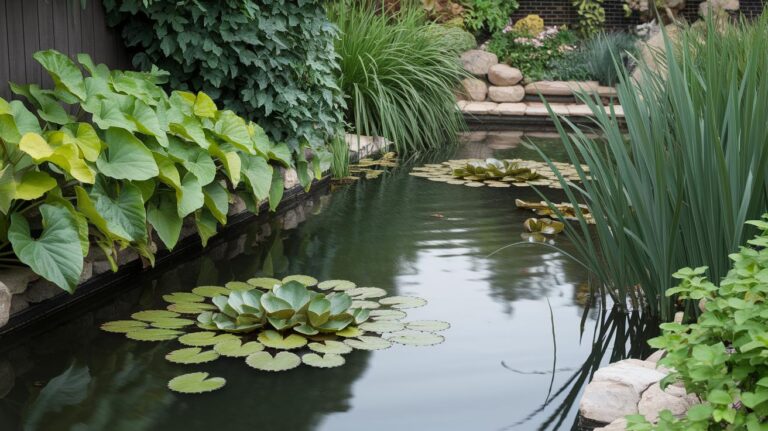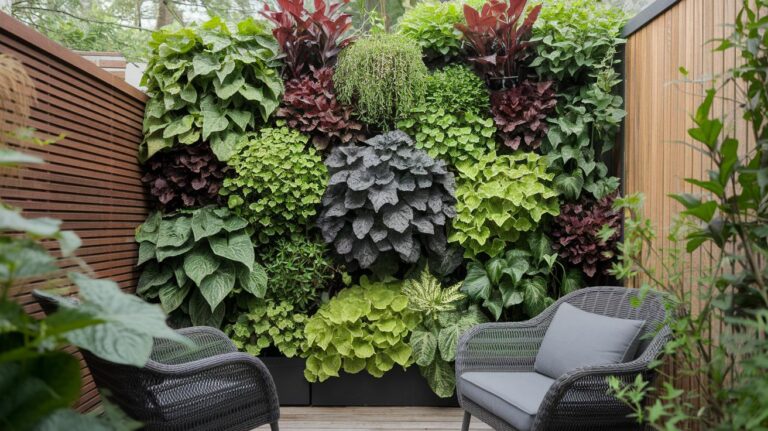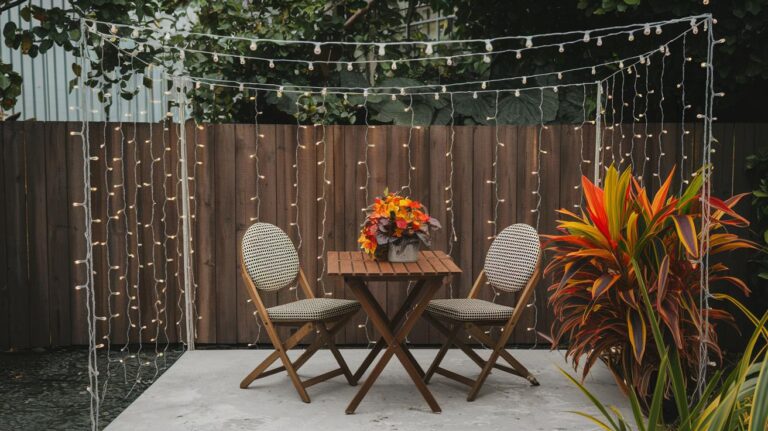Vegetable Garden Layout For Abundant Harvests
Ever peek at your lettuce row and feel like it’s more of a jumble than a crisp salad fix? I felt the same surprise last season. But a well-planned layout can turn that trickle of greens into a flood of fresh veggies for dinner.
Yes!
Start by sketching your garden. Um, grab some paper and map out each bed so you see where every plant goes. Then test your soil (a simple check of your dirt’s health) to know if you need to add compost (decayed organic matter that enriches soil). And place taller plants on the north side so they don’t shade their shorter buddies.
You’ll save time, water, and stop chasing tools around the yard. Have you ever done that? Back to the plan. I’ll walk you through an easy vegetable garden layout that gives you lush beds, simple harvesting, and the joy of a bounty that lasts all season.
Designing an Efficient Vegetable Garden Layout
Having clear goals helps you design a veggie garden that works for you. Do you want fresh lettuce for dinner? Enough tomatoes to can for winter? Or maybe extra veggies to share? Spending a couple hours planning now means less scrambling later.
Next, get to know your space. Measure the length and width. Run your hand through the top inch of soil (that’s the layer plants start in). Is it breaking apart like cake or sticking together like clay? Note where your water spigot or rain barrel sits. Find your USDA Hardiness Zone (the climate map that tells you safe planting dates). And don’t forget the sun. You need six to ten hours of direct light.
Here’s a quick garden checklist:
- Set your goals: growing for savings, self-reliance, or sharing?
- Map your area: note shady spots and sunny corners.
- Track the sun path: sketch it so you can lay beds north to south with tall plants on the north side.
- Test the soil: use a simple kit to check pH (how acidic or alkaline your soil is) and nutrient levels; mark wet or dry spots.
- Plan watering: group thirsty plants together; run drip lines or soaker hoses (tubes that gently water the roots) and place rain barrels for a gravity feed.
- Lay out paths: leave 18 to 24 inches (wide enough for a wheelbarrow) so you can weed and harvest without stepping on plants.
Think of your garden like a grid you can repeat each year. That makes rotating crops a breeze and keeps soil healthy. Uniform paths let you reach every row without squishing seedlings. And you’ll spend more time enjoying the soft snap of a green bean than dodging corners.
By the way, my cat loves sunning on my raised bed. But back to soil prep: a neat layout cuts down on work and boosts your harvest.
Raised Bed Garden Layouts and Dimensions
Raised beds help water drain better and suit poor soil or sloping yards. They’re perfect if you don’t want to kneel in mud or have heavy clay beneath your plants. You can build them at a height that works for your back or fit them on a patio, balcony, or between garden paths. I love stepping on a wooden edge instead of squishing into wet ground.
Standard shapes come in 4×4′ or 4×8′ boxes, with an inside reach width of 2–4′ so you can plant and weed without stretching too far. Greens like lettuce or herbs need just 6–12″ of loose soil. Deep-rooted veggies such as carrots, beets, or potatoes need 12–18″ to stretch their roots. Keyhole bed geometry puts a compost pile right at the center for easy feeding. Terraced bed construction on slopes tames erosion by creating flat planting zones along a hill.
| Bed Type | Footprint | Height | Mix Ratio |
|---|---|---|---|
| Rectangular | 4×4′ or 4×8′ | 6–12″ (greens), 12–18″ (roots) | 60% topsoil 30% compost 10% perlite/vermiculite |
| Keyhole | 8′ diameter with compost hub | 12–18″ | 60% topsoil 30% compost 10% perlite/vermiculite |
| Terraced | 4×6′ tiers on slope | Varies by tier (6–18″) | 60% topsoil 30% compost 10% perlite/vermiculite |
Fill each bed with a blend of 60% topsoil, 30% compost, and 10% perlite or vermiculite for light, airy soil that drains well. For more tips on choosing the best soil for raised garden beds, check out our detailed guide.
Companion Planting and Crop Rotation in Your Vegetable Garden Layout

Have you ever sniffed the sweet smell of marigolds by your tomatoes? Planting certain veggies and flowers side by side helps keep plant-eating bugs (pests) away and draws in pollinators (insects that move pollen). I like to tuck basil, nasturtiums, or marigolds along my raised bed edges. They work as living bug shields and a welcome mat for bees.
Here are six top garden buddies:
- Tomatoes + basil: Basil keeps tomato pests at bay.
- Carrots + onions: Onion scent masks carrot flies.
- Cucumbers + nasturtiums: Nasturtiums lure aphids away.
- Peppers + marigolds: Marigolds repel tiny worms (nematodes).
- Beans + corn: Corn stalks act like a trellis for climbing beans.
- Cabbage + dill: Dill boosts cabbage growth and flavor.
Rotating crops (moving plant families each year) over three to four years keeps soil happy. When you plant onions and garlic (the Alliaceae family) after tomatoes and peppers (the Solanaceae family), you let the soil rest and cut down on pests that target one group. Each season you get a different mix of roots and leaf litter. That way, nutrients return to the ground instead of getting used up.
| Family | Year 1 | Year 2 | Year 3 | Year 4 |
|---|---|---|---|---|
| Alliaceae (Onions/Garlic) | Onions/Garlic | Tomatoes/Peppers | Cabbage/Broccoli | Cucumbers/Squash |
| Solanaceae (Tomatoes/Peppers) | Tomatoes/Peppers | Cabbage/Broccoli | Cucumbers/Squash | Beans/Peas |
| Brassicaceae (Cabbage/Broccoli) | Cabbage/Broccoli | Cucumbers/Squash | Beans/Peas | Lettuce/Spinach |
| Cucurbitaceae (Cucumbers/Squash) | Cucumbers/Squash | Beans/Peas | Lettuce/Spinach | Onions/Garlic |
| Fabaceae (Beans/Peas) | Beans/Peas | Lettuce/Spinach | Onions/Garlic | Tomatoes/Peppers |
| Asteraceae (Lettuce/Spinach) | Lettuce/Spinach | Onions/Garlic | Tomatoes/Peppers | Cabbage/Broccoli |
Want to make a tiny insect hotel? Add a strip of yarrow (flower) or borage (herb) between your beds. I did it in a corner last year and ladybugs and lacewings moved right in. No sprays needed and pollinators get a rest stop near your veggies.
Vertical Growing Systems and Container Layout Options for Vegetable Garden Layout
Ever notice how peas, beans, cucumbers, and tomatoes beam when you let them climb instead of sprawling on the ground? Their vines tickle the trellis and the leaves catch the sunlight just right. A simple trellis (frame for climbing plants) or A-frame along the garden’s north side keeps your lettuce and herbs happily in the sun without being shaded.
You can even tuck an obelisk right next to your patio pots or hang a trellis on a fence. That frees up precious ground space when your yard is small. It’s like stacking your garden: green beans up high, low greens down below. To pick the right stakes or wires for your vines, flip through a trellis placement guide for ideas.
No full yard? No problem. Five-gallon pots (about 20 liters) and grow bags (breathable fabric containers) let you wheel a tomato or pepper plant into the best sunspots. Give each container about 18 to 24 inches of breathing room so roots don’t compete for water. I always sketch a quick layout on paper to spot any gaps before planting. A neat line of colorful buckets along a deck rail just screams “fresh snacking!”
For watering, set up drip lines (tubing that drips water slowly) or soaker hoses (perforated hoses) along each row of pots so every plant gets a gentle sip right at its roots. And if you tuck a cold frame (mini greenhouse) along your deck’s south side or a raised bed, you’ll chase away early frosts and stretch your harvest into those crisp mornings.
Seasonal Strategies and Succession Planting in Your Vegetable Garden Layout
Have you ever noticed your backyard can feel like three tiny gardens? There’s the cool zone (35°F to 64°F), the warm zone (65°F to 84°F), and the hot spot above 85°F. Each patch acts like its own little microclimate (a small weather zone). And that means you can stretch your harvest all season long.
Try sowing quick greens like lettuce and arugula every two weeks so you always have fresh leaves for salads. I plant one row on the 1st and another on the 15th. Then I pop a colored stake or flag by each bed to remember which one’s up next.
Start seeds in the cool bed (a shadier spot that stays damp). When seedlings are big enough, move them to the warm bed (it gets extra sunshine). Save the hottest bed for heat-lovers like okra or melons. Think of each zone as its own oven set to the perfect temperature.
When the first frost is on its way, tuck a cold frame (a clear-roofed box that traps warmth) along the north side of your beds. The frame soaks up daytime heat and keeps young brassicas cozy at night. By the way, I once forgot mine and my broccoli got a surprise ice snack, oops, right?
In late fall, drape frost cloth (light fabric that blocks frost but lets light in) over kale, broccoli, or spinach. You’ll be amazed at how much longer you can harvest while neighbors have already put away their trowels.
Final Words
With goals set and a clear site map in hand, you planned sun exposure, irrigation zones, and bed shapes. You chose raised beds sized for easy reach, sketched companion plants at the borders, and slotted in paths just wide enough for weeding and gathering produce.
And by adding trellises, containers, and cold frames, you laid out a garden that grows upward and extends your season. Mixing rotation cycles and insectary strips makes sure your soil stays happy.
Embrace this step-by-step vegetable garden layout and get ready to enjoy fresh veggies all season long.
FAQ
What free or app-based planners can I use for a vegetable garden layout?
The best free garden planners and apps include GardenPlanner.com, GrowVeg Planter, and VegPlotter. They let you drag bed shapes, set plant spacing, and save multiple seasonal layouts.
What templates and spacing guides are available for vegetable garden layouts?
Vegetable garden templates often use grid patterns or raised-bed frameworks. You can download printable 4×8 bed sketches with 12–18″ row spacing and 18–24″ paths, or use online spacing charts.
How do I plan a vegetable garden layout for small spaces?
Small spaces benefit from vertical trellises, square-foot grids, and container clusters. Use window boxes, stackable planters, or narrow raised beds and place them where they catch 6–8 hours of sun.
How should I space and arrange crops in a 20×40 vegetable garden?
A 20×40 plot works well as four 8×20 beds. Keep 18–24″ aisles, orient beds north–south, group plants by water needs, and reserve a corner for rotation and compost.
Which vegetables grow well together, and which should be kept apart?
Tomatoes pair nicely with basil or marigolds, and carrots fare well with onions. Avoid planting brassicas near strawberries, beans next to onions, and garlic too close to peas.
What path design works best in a vegetable garden?
Straight paths 18–24″ wide running north–south offer easy access and even sun. Curved paths can add charm but may complicate watering lines and bed layouts.







